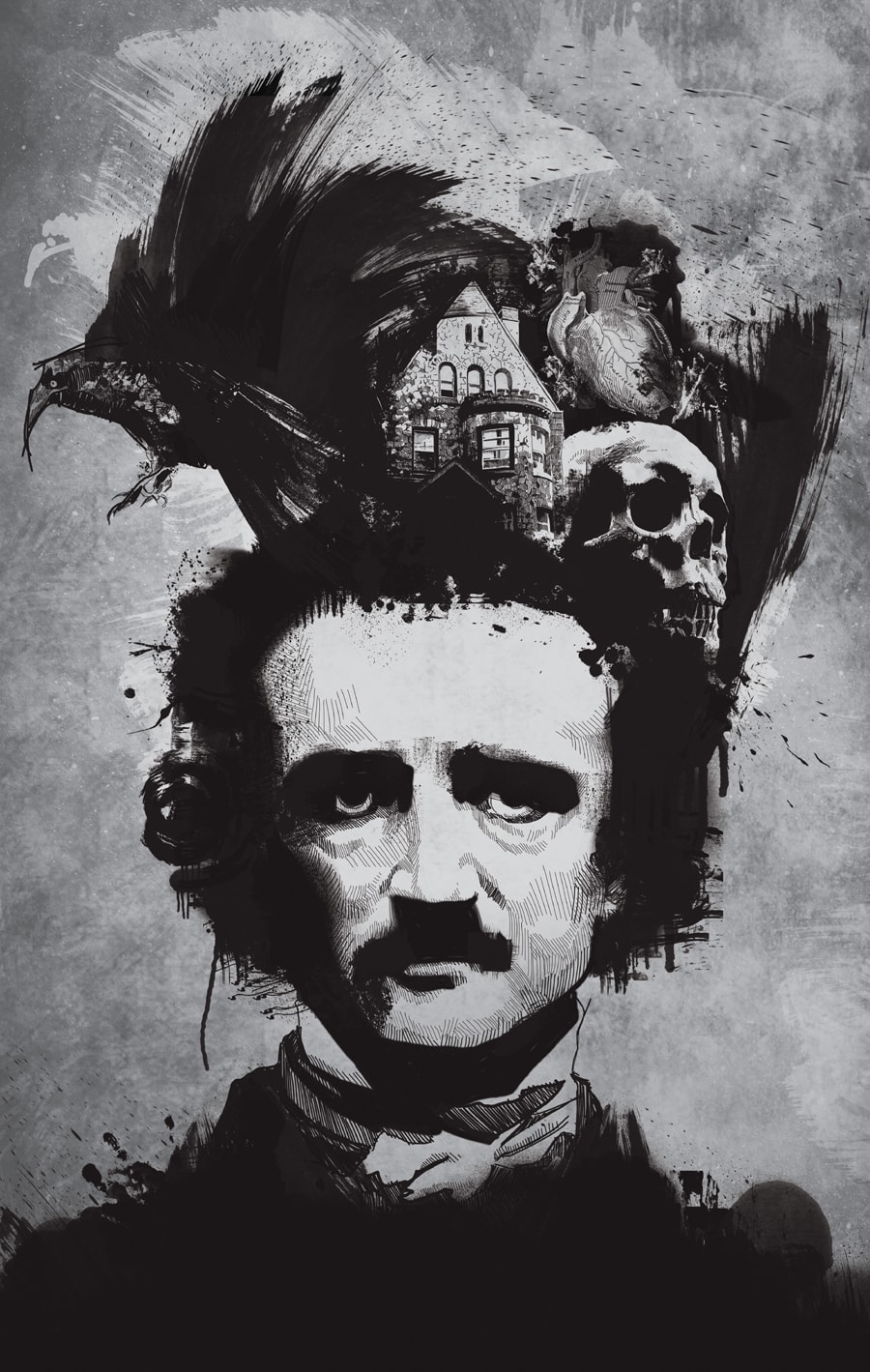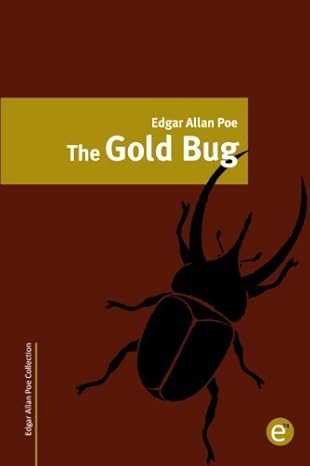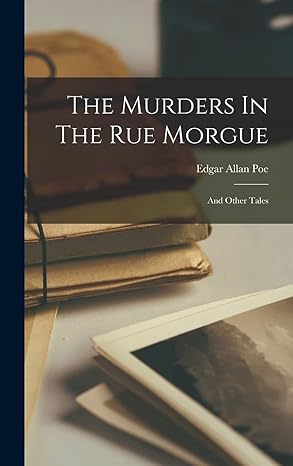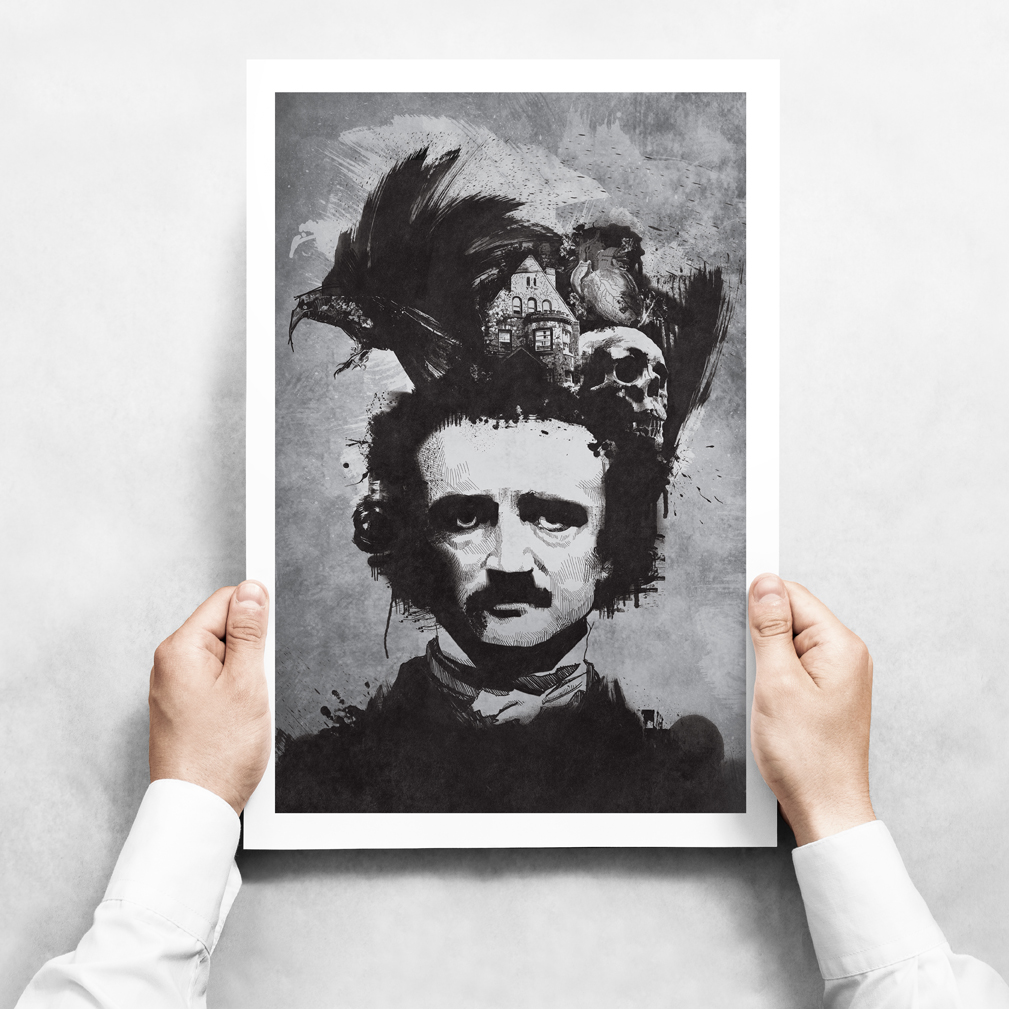
Disclaimer: In the article below there are links to several of Edgar Allan Poe’s books. As an Amazon Associate I earn from qualifying purchases.
10 Mind-blowing Facts About Edgar Allan Poe

ARTIST, ILLUSTRATOR WRITER
Inspired by the strange genius of Edgar Allan Poe, I created this hand-detailed art piece to honor his legacy.
Inspired by the strange genius of Edgar Allan Poe, I created this hand-detailed art piece to honor his legacy.
Disclaimer: In the article below there are links to several of Edgar Allan Poe’s books. As an Amazon Associate I earn from qualifying purchases.
Edgar Allan Poe was possibly named after a Shakespearean character.
Both of Edgar Allan Poe’s parents were actors and were performing in Shakespeare’s King Lear the year he was born. This has led to much speculation that he was named for the character of Edgar, the Earl of Gloucester’s son. Though his father would soon abandon the family when Edgar was only one years old.
Edgar Allan Poe had a gambling problem.
When Poe was in college at the University of Virginia he amassed a gambling debt. This led to problems between him and his foster father. John Allan gave him money when Poe tried to convince him that he didn’t give him enough money for classes, however, Poe’s debt just increased. This led Poe to drop out and enlist in the army. Poe, however, was soon expelled from West Point, his foster mother died and his foster father disowned him. To further punish Poe, when John Allan died he left Poe out of his will, providing for an illegitimate child that Poe had never met.
Edgar Allan Poe wasn’t just a prolific writer.
The master of the macabre was a writer’s writer. He wrote short stories, poetry, and a novel. He also wrote a textbook, a book on scientific theory as well as essays and book reviews. But that’s not all. Being such a prolific writer did not keep Poe from pursuing athletic pursuits. He held a record for swimming six miles up the tidal James River, was a champion long jumper, and enjoyed rowing and hiking.
If Poe’s mysterious life fascinates you, you’ll love the dark elegance of my limited Poe art print — available here.”
Yes, Edgar Allan Poe did marry his cousin.
Edgar Allan Poe enjoyed cryptography.
Edgar Allan Poe had a deep fascination with cryptography, particularly the use of ciphers and codes, which he explored both in his literary works and personal interests. He was captivated by the challenge of creating and solving encoded messages, believing that cryptography was an intellectual pursuit that combined logic and creativity. This passion is most famously reflected in his short story The Gold-Bug, where a cryptographic puzzle plays a central role in unraveling the plot. The story’s protagonist deciphers a hidden message that ultimately leads to the discovery of a buried treasure, showcasing Poe’s understanding of encryption techniques and his ability to weave them seamlessly into his narratives. Beyond fiction, Poe even invited readers of a Philadelphia magazine to submit ciphers for him to solve, demonstrating his skill and enthusiasm for the art of secret writing. His engagement with cryptography not only added layers of mystery to his stories but also contributed to the broader public interest in codes and ciphers during his time.
Poe invented detective fiction.
If you enjoy Sherlock, you can thank Edgar Allan Poe for helping to shape detective fiction. His 1841 story The Murders in the Rue Morgue is considered the first true detective tale, introducing C. Auguste Dupin, a brilliant investigator who solves crimes through logic and deduction. Dupin became the model for later detectives like Sherlock Holmes and Hercule Poirot, influencing the genre’s key elements—an observant detective, a narrator companion, and a focus on logical reasoning. Poe’s innovative storytelling captivated readers and set the stage for the mystery genre, proving his lasting impact on crime fiction in literature, film, and television.
Poe theorized the Big Bang.
Strange as it may seem, some 80 years before the theory became popular, Edgar Allan Poe wrote an essay called “Eureka: A Prose Poem” in which he proposed the idea of The Big Bang. He considered it to be his career’s masterpiece.
Poe became an overnight success...kinda
He vanished for nearly a week before his death.
In late September 1849, Poe boarded a train home to New York City from Philadelphia. He would never arrive. A week later, on October 3, he appeared outside of Ryan’s Tavern disheveled and delirious, wearing clothes that didn’t fit. Unable to explain, and in almost a trancelike state he was taken to Washington College Hospital where he was rambling and calling out for a mysterious person named “Reynolds.” He finally passed away on October 7th, with no more of an understanding of what had happened to him or what the cause of his death other than the official cause of death being “congestion of the brain”
His last words were hauntingly poetic
When Poe died, his reported last words were, “Lord, help my poor soul.” Fittingly tragic, they echoed the despair and darkness of his stories. Whether real or embellished by his attending physician, they became part of his legend — the poet who lived and died under his own shadow.
Bring Poe’s Shadow Home
My “Edgar Allan Poe” art piece captures the intensity, melancholy, and beauty behind the man who gave us The Raven. Each 11×17 print is hand-signed — perfect for lovers of gothic literature and dark art.



